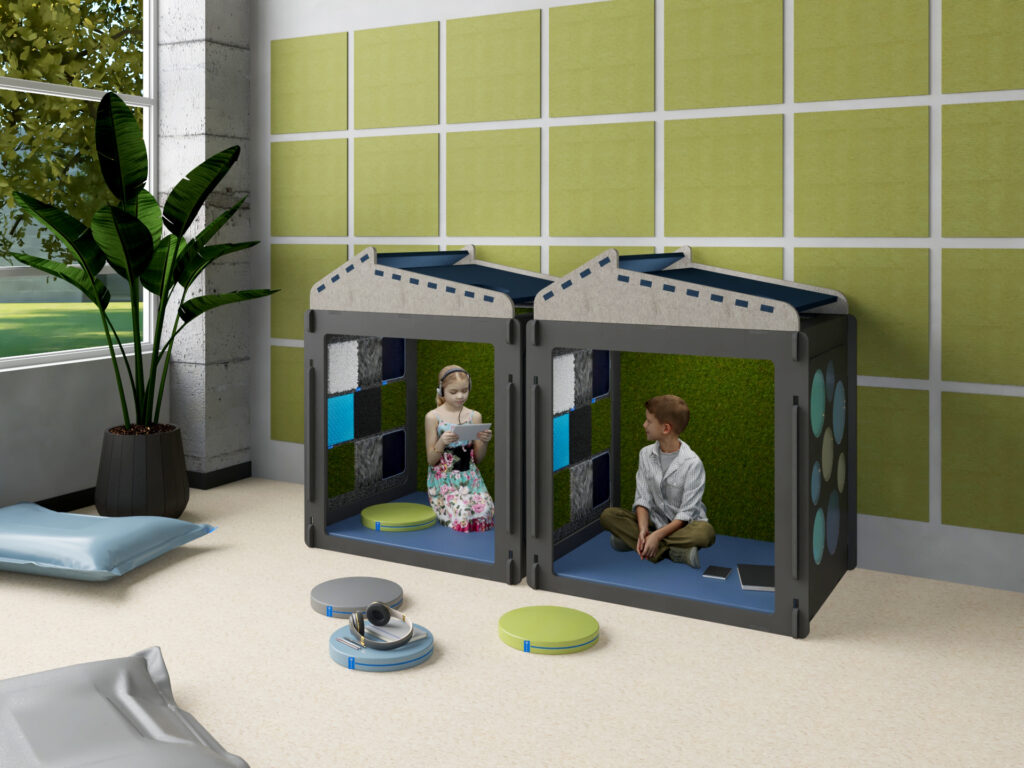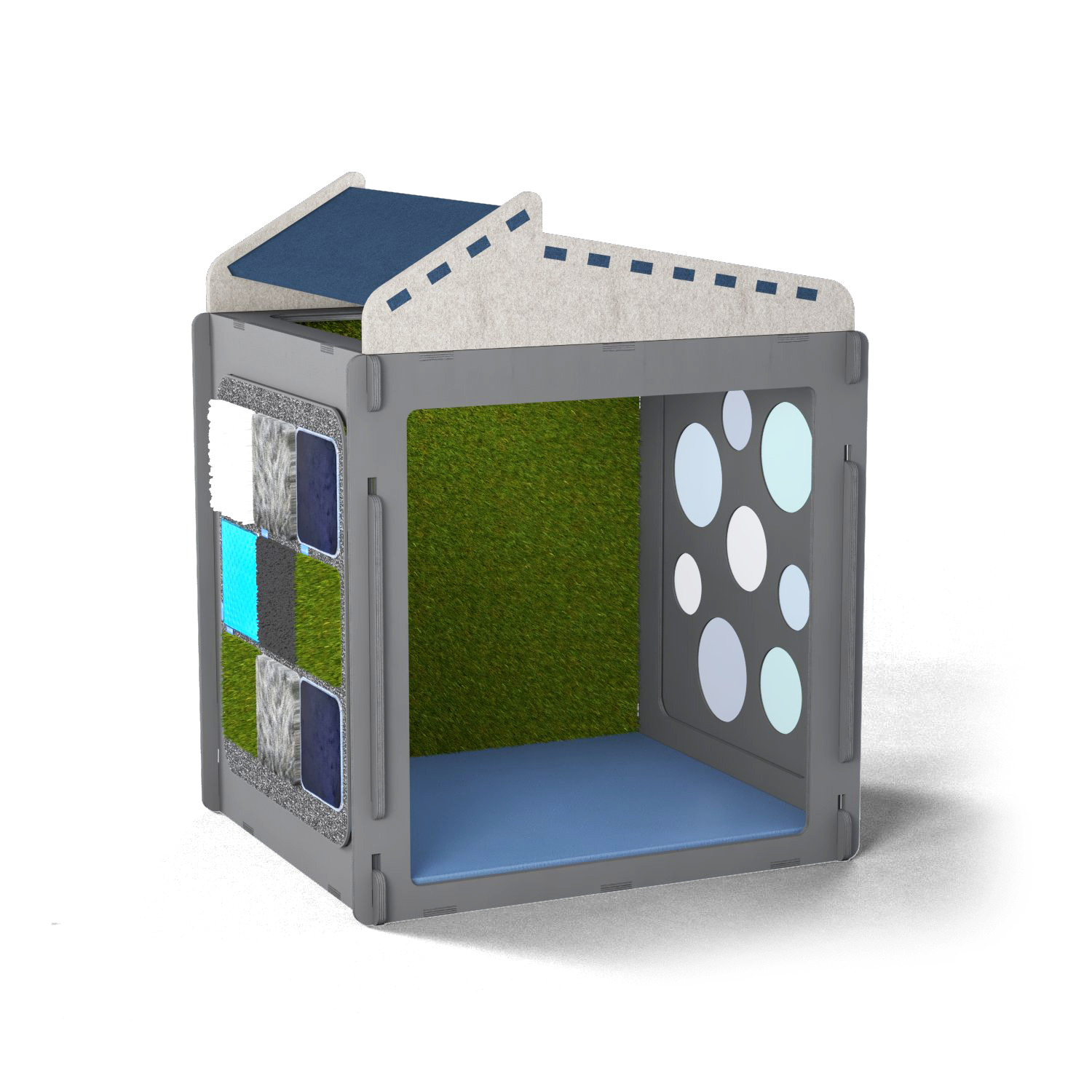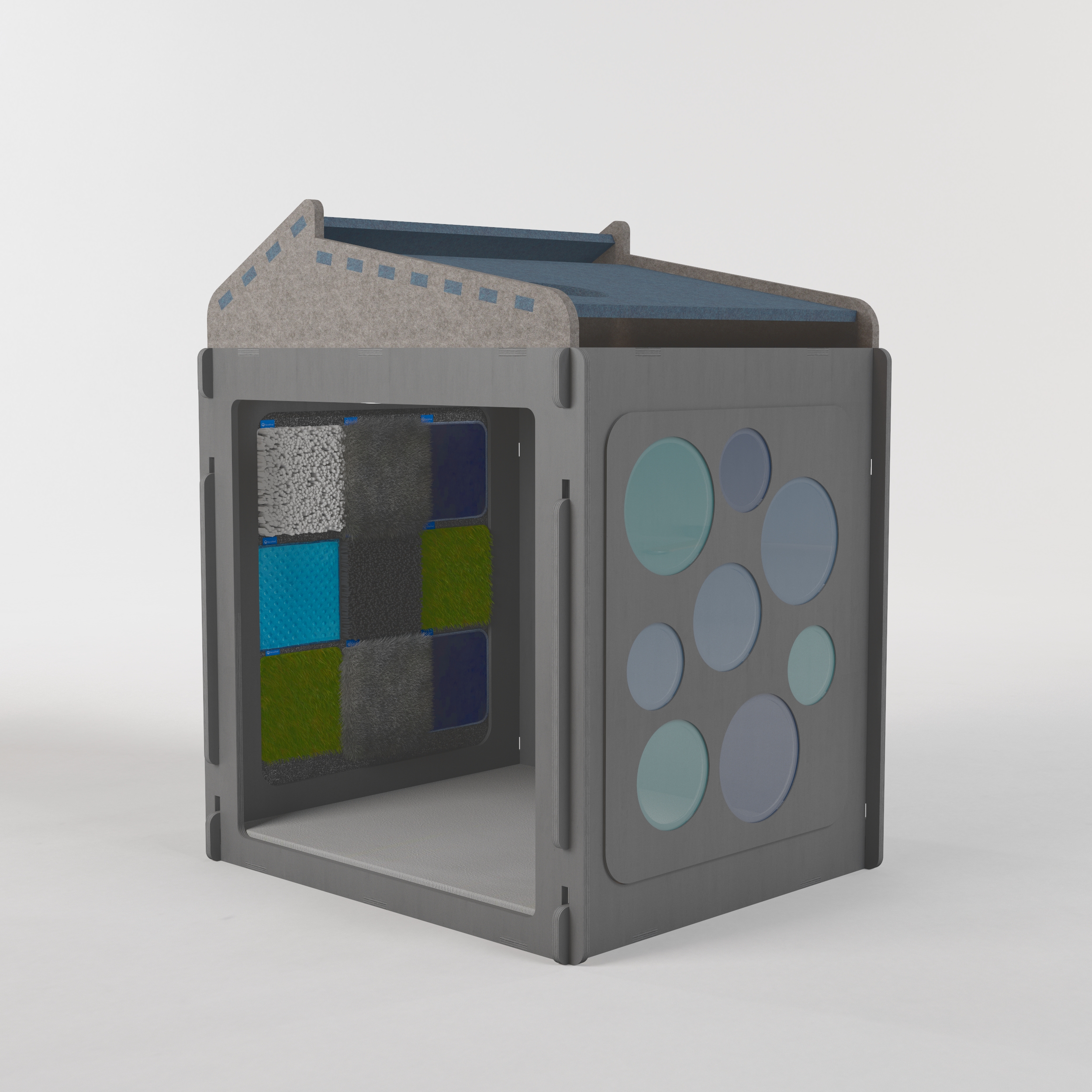A collaboration from the UFG Manufacturing Team: Director of Education, Hannah Tejeda, BA, M.ed; Engineer, Arun Surujpaul and A&D Representative, Adriana Mezquitti
Australia’s Department of Education highlights teaching ideas regarding the 5 senses. In a page titled, ‘The Senses Working Together’ they’ve included the following critical perspectives:
- We use our senses to gather and respond to information about our environment, which aids our survival.
- Each sense provides different information which is combined and interpreted by our brain.
- Which sense is dominant varies between different animals, as well as which is the most sensitive. Our dominant sense is sight and hearing is our most sensitive (due to the range of ‘loudness’ over which hearing operates.
- Advancements in science have enhanced the quality of life for many people with sensory disabilities by providing such things as alternative methods of communication, increased mobility, additional education tools, and technology designed for sensory enhancement, such as cochlear implants.
The importance of the 5 senses has been proven time and time again. Especially considering the internal connectivity of each sense and how one builds upon another.
Washington University’s Center for the Humanities argues that the 5 senses are keys to differentiators which lead to individualistic unique values and perceptions.
Faculty Fellow Casey O’Callaghan emphasizes, ‘What seems a common bond – our ability to perceive the world through our senses – is actually a site of unexamined difference.’
O’callaghan continues to engage with the idea of diversity stemming from the senses.
It’s Too Loud
So why so much noise about the senses? What’s the fuss?
Discover Magazine recently published that as much as 15% of the population has a form of SPD (Sensory Processing Disorder). They describe SPD as…
‘…currently a controversial condition, and the American Psychiatric Association’s Diagnostic and Statistical Manual of Mental Disorders, 5th edition (DSM-5) does not recognize it.’
‘For people with SPD, their brains form an inappropriate response to sensory messages.’
This can lead to 3 different types of behaviors:
- Sensory Modulation Disorder – struggle to respond appropriately to sensory messages
- Sensory-Based Motor Disorder – affects how a person moves or plans their movements
- Sensory Discrimination Disorder – a struggle to see variation in their sensory input (visual, auditory, tactile, taste, smell, movement, balance)
The Senses at School
Sensory processes surface in differing ways within various age groups. Considering individuals will have copious responses to stimulus, it’s important to deliberate the senses within learning space design.
In May 2024, Neurodiversity Voices posted a discussion with Frieda called, ‘Hear, See, Feel: The Rise of Sensory Rooms.’ In which the rise and impact of sensory spaces are featured.
‘Many autistic people, as well as people with ADHD, have heightened sensory sensitivities that can cause them to hear everything (the clanking of air-conditioning, the hum of electricity, the exact words whispered by a person on the other side of the office). Prolonged exposure can cause physical discomfort, agitation, and lead to emotional dysregulation.’
She continues to recount personal experiences regarding both her daughters which were diagnosed with SPD –
‘So effective are these rooms as tools to regulate that when I pick up my daughters I can guess from their moods if they were not able to visit the room that day.’
Sensory Rooms is not just a new educational buzz term or spatial trend – they are spaces designed specifically for regulation and internalization. And as perceptions of sensory spaces continue to stretch and grow – the challenge will be to incorporate these tools in every space within learning organizations… not just Sensory Rooms.
A great way to embrace this work and begin to create positive change, is to integrate spaces with the SereniCube.
Design Considerations
An excerpt from A&D Liaison – Adriana Mezquitti
SereniCube is a thoughtfully crafted sanctuary, designed for cognitive, psychological, and physical variances. This innovative reserve harmoniously blends textures, visual stimuli, and auditory elements; creating an immersive individualized experience.
The cove-like structure offers acoustic regulation, while serene ocean and nature-inspired landscapes facilitate clearer executive functioning.
Other auditory stimulus include:
- Fireside crackles
- Bubbles
- White Noise
- Bird Chirps
- Rain Storms
By incorporating intentional breaks in sensory stimulation, SereniCube minimizes mental clutter and noise, providing a much-needed respite for individuals to recharge and rejuvenate. Perfect for all ages, SereniCube invites you to dive into its calming waters, transforming any space into a haven of tranquility and support for the parasympathetic nervous system. Experience the synergy of design and function, where every element is meticulously engineered for comfort and coherence.
Finish Considerations
We offer a variety of frame color options, including grey, black, and natural, allowing for customization to fit different aesthetic preferences. It features two interchangeable panels: one equipped with circle cutouts available in blue transparent or clear, and the other made from acoustic material designed for tactile engagement. Additionally, the back panel can be customized to be either plain or grassy, with the latter available for an additional charge. The PET top comes in two color options, enhancing the overall design versatility. This combination of features not only promotes a functional workspace but also caters to individual style and sensory needs.
Engineering Considerations
An excerpt from Jr Industrial Designer – Arun Surujpaul
Designing the SereniCube wasn’t just about creating a wooden box; it was about crafting a space that feels safe, calming, and interactive for every student who steps inside. Each wooden panel is precision-cut and assembled like puzzle pieces to ensure a seamless fit— no awkward gaps or harsh edges, and most importantly, no pinched fingers. This puzzle-like design makes the SereniCube sturdy and easy to assemble for educators.
Safety and sensory engagement were at the heart of material choices. The interior walls are lined with sensory fabric and grassy textures, carefully selected for their durability and tactile appeal. These surfaces aren’t just fun to touch—they’re also built to withstand the natural wear and tear of classroom use. The PET roof is a standout feature, offering acoustic dampening to reduce outside noise, creating a soothing, cocoon-like environment for students who need a quiet space to reset.
The small soundscape speaker included with the SereniCube was chosen for its simplicity, compactness and ease of use. It includes preloaded nature sounds designed to promote relaxation. The speaker’s compact size ensures it fits neatly into the space without disrupting the aesthetic or functionality. Inside, the cushioned base offers both comfort and durability, making the SereniCube ideal for moments of mindfulness, self-regulation, or sensory exploration.
Sensory Spaces for Inclusion
What truly sets the SereniCube apart is its ability to transform learning spaces into a more inclusive environment. By combining tactile materials, acoustic dampening, and calming soundscapes, we’ve engineered a product that supports students with sensory needs while remaining versatile and engaging for all learners. The SereniCube is more than just a piece of furniture—it’s a thoughtful solution to the challenges of modern education, where every individual deserves a space that feels just right.
Sources
Victoria State Government Department of Education
‘The Senses Working Together’
https://www.education.vic.gov.au/school/teachers/teachingresources/discipline/science/continuum/Pages/sensesworking.aspx
Washington University in St. Louis – Center for the Humanities
‘Our Senses as Sources of Value’
3.23.22 Human Ties Features, Faculty Fellow Projects
https://humanities.wustl.edu/features/casey-ocallaghan-our-senses-sources-value#:~:text=We%20know%20well%20the%20five,a%20site%20of%20unexamined%20difference.
Discover Magazine – Science that Matters
‘The Controversial Condition of Sensory Processing Disorder’
5.25.22 Emilie Le Beau Lucchesi
https://www.discovermagazine.com/mind/the-controversial-condition-of-sensory-processing-disorder
Neurodiverse Voices
‘Hear, See, Feel: The Rise of Sensory Rooms’
5.30.24
https://www.linkedin.com/pulse/see-hear-feel-rise-sensory-rooms-neurodiversity-in-business-9ivke/
Blog #2 Sneak Peek
A literature review on the text ‘Sound Healing: How to Use Sound to Beat Stress & Anxiety’ by Farzana Ali and potential connections to the SereniCube.



